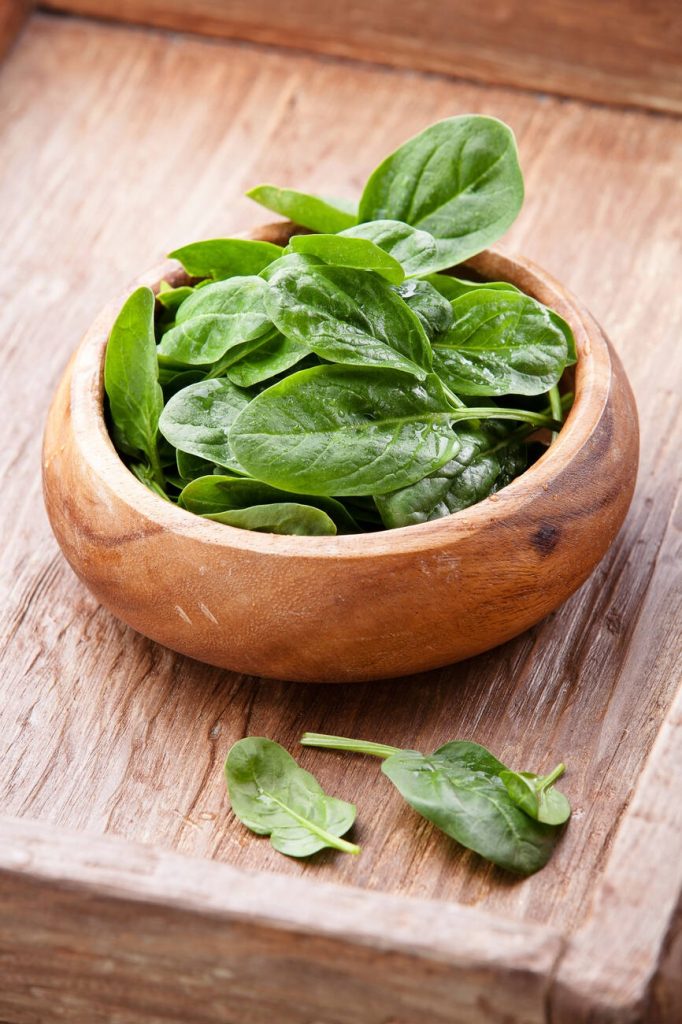Do you ever feel like your energy is running on empty? Well, listen up because spinach might just be the iron-packed superhero that can save the day! Yes, there IS iron in spinach and it’s time to give this leafy green powerhouse the recognition it deserves. Iron deficiency can leave you feeling tired and weak, but incorporating iron-rich foods like spinach into your diet can help replenish those vital stores and keep you feeling strong and vibrant. So, let’s dive into the world of spinach and discover its incredible iron benefits.
The Importance of Iron in the Diet
Iron is an essential nutrient that plays a critical role in your body. It is responsible for transporting oxygen from your lungs to the rest of your body, ensuring that all organs and tissues receive the oxygen they need to function properly. Iron deficiency, also known as anemia, can result in symptoms like fatigue, chest pain, and poor appetite. To prevent this deficiency and maintain optimal health, it’s important to consume enough iron through your diet. Whole, nutritious foods are excellent sources of iron, including heme iron from animal sources like red meat and non-heme iron from plant sources like spinach and legumes. By incorporating these iron-rich foods into your meals, you can ensure that you meet your daily recommended intake and avoid iron deficiency or anemia.
Recommended Daily Iron Intake for Different Age Groups
To meet your recommended daily iron intake for your age group, it is important to consume a variety of iron-rich foods. For nonpregnant women ages 19 to 50, the recommended intake is 18 milligrams (mg) of iron per day. Pregnant women need 27 mg of iron daily, while women age 51 and older, as well as men age 19 and older, need 8 mg of iron per day. Infants and children require 7 to 15 mg of iron each day depending on their age. It’s crucial to meet these intake levels to prevent iron deficiency. However, be cautious not to exceed the recommended limits. Teenagers and adults should not consume more than 45 mg of iron per day, while children age 13 and younger should not exceed 40 mg per day. Remember that a balanced diet with both heme and non-heme sources of iron can provide optimal absorption and help maintain good health.
Understanding Heme and Non-Heme Iron Sources
Including both heme and non-heme iron sources in your diet can maximize iron absorption and support overall health. Heme iron, found in animal sources like meat, poultry, and seafood, is more easily absorbed by the body compared to non-heme iron from plant sources. However, vegetarians can still meet their iron needs through plant-based options such as legumes, fortified cereals, pumpkin seeds, and edamame. By incorporating a variety of these foods into your meals and snacks, you can ensure a sufficient intake of both types of iron. Remember to pair non-heme iron sources with vitamin C-rich foods to enhance absorption. Taking steps to include a balanced mix of heme and non-heme iron sources in your diet will help prevent iron deficiency and promote optimal health.
Top Sources of Heme Iron for Non-Vegetarians
If you’re a non-vegetarian, incorporating red meat into your diet can provide a good source of heme iron. Red meat, such as ground beef, is rich in iron and can help meet your daily iron needs. A 3.5-ounce serving of ground beef contains 15% of the recommended daily value for iron. Not only does red meat supply heme iron, but it also offers other essential nutrients like protein, zinc, selenium, and B vitamins. Regular consumption of meat, poultry, and fish may even lower the risk of iron deficiency. It’s important to note that moderation is key when consuming red meat to avoid excessive intake and potential health risks associated with high levels of consumption.
Iron-Rich Seafood Options
If you’re a seafood lover, incorporating iron-rich options like bivalve mollusks, including oysters, mussels, and clams, into your diet can help meet your daily iron needs. These shellfish are not only delicious but also packed with essential nutrients. Here’s why you should consider adding them to your meals:
- Iron powerhouse: Bivalve mollusks are excellent sources of iron, providing a significant amount per serving.
- Other nutrients: Along with iron, these shellfish offer zinc and vitamin B12, which are important for overall health.
- Variety of choices: Whether you prefer oysters on the half shell or a steaming bowl of mussels in broth, there are many ways to enjoy these seafood options.
- Healthy alternative: If you’re looking for alternatives to red meat or poultry as your source of iron, bivalve mollusks can be an excellent choice.
Vegetarian-Friendly Iron Powerhouse: Chickpeas
Chickpeas, also known as garbanzo beans, are a great vegetarian-friendly source of iron that can be easily incorporated into various dishes. You can enjoy chickpeas in salads, pasta dishes, or even make homemade hummus with them. One cup of chickpeas provides 1.5 mg of iron, along with plant-based protein. If you want to enhance the absorption of iron from chickpeas, try adding some lemon juice to your hummus because it contains vitamin C which aids in iron absorption. Chickpeas are not only a valuable source of iron but also offer other health benefits like fiber and nutrients. So why not start including these versatile legumes in your meals for a nutritious boost?
Boosting Iron Intake With Iron-Fortified Breakfast Cereals
To boost your iron intake, try incorporating iron-fortified breakfast cereals into your morning routine. Here’s why they can be a great addition to your diet:
- Convenient and easy: Iron-fortified breakfast cereals are readily available and require minimal preparation. Simply pour them into a bowl, add milk or yogurt, and enjoy a nutritious start to your day.
- High in iron: These cereals are specifically fortified with iron, ensuring that you get a significant amount of this essential nutrient with each serving.
- Variety of options: There is a wide range of iron-fortified breakfast cereals to choose from, including bran flakes, whole grain cereals, and even flavored varieties like chocolate or cinnamon. Find one that suits your taste preferences.
- Additional nutrients: Along with providing the necessary iron, many fortified cereals also offer other important vitamins and minerals such as B vitamins, folic acid, and calcium.
Other Iron-Rich Foods to Incorporate Into Your Diet
Now that you know about the benefits of iron-fortified breakfast cereals, let’s explore other iron-rich foods that you can incorporate into your diet. Spinach is a great option as it contains 15% of the recommended daily value for iron per serving. Although spinach has non-heme iron, which is not as easily absorbed by the body, it is rich in vitamin C, which enhances iron absorption. You can add spinach to salads, soups, or even fruit smoothies for a boost of iron. Liver and other organ meats are also high in iron and provide essential nutrients like protein and B vitamins. Legumes like lentils and beans are another excellent source of iron and offer additional benefits such as folate, magnesium, potassium, and fiber. Lastly, red meat contains significant amounts of iron along with zinc, selenium, and B vitamins. Incorporating these foods into your meals can help increase your daily intake of iron and support overall health.

